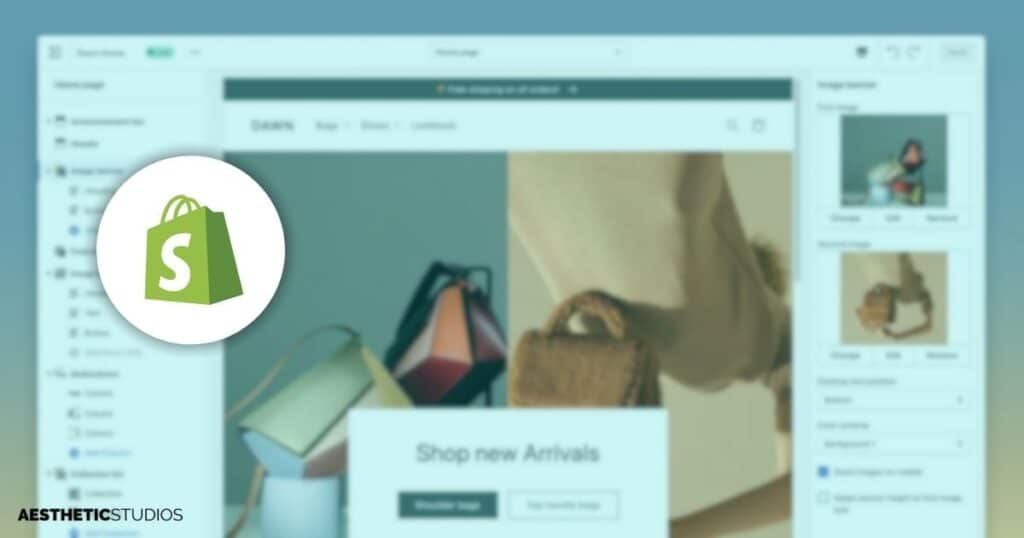Web Design Made Easy: Tips for Creating a Professional Website

Have you ever felt overwhelmed by the thought of designing a website? Whether you’re starting from scratch or looking to revamp an existing site, the process can seem daunting. You might wonder where to begin, what tools to use, and how to ensure your site looks professional. But don’t worry, you’re not alone. Web design isn’t just about making a site look good. It’s about creating an experience that’s engaging and easy to navigate. And the good news? You don’t need to be a tech wizard to design a great website. With a clear understanding of the basics and a few practical tips, you can build a site that not only looks fantastic but also functions seamlessly. In this article, you’ll learn exactly how web design works, from the essential elements of good design to the step-by-step process of creating a website. By the end, you’ll have the knowledge and confidence to design a website that truly represents your vision and engages your audience. What is Web Design? Web design is the process of creating the visual layout, user interface, and overall aesthetic of a website. It involves planning and conceptualising elements like text, images, graphics, and interactive features to create a cohesive and functional website. Definition and Importance At its core, web design is about problem-solving and communication. A well-designed website effectively communicates its message, engages users, and achieves its goals—whether that’s providing information, selling products, or building a brand. Why is Web Design Important? First Impressions Matter Your website is often the first interaction people have with your brand. A well-designed site creates a positive impression and encourages visitors to explore further. User Experience Good web design ensures that your site is easy to navigate, which enhances user satisfaction and retention. Poor design can frustrate users and drive them away. Trust and Credibility A professional-looking website builds trust and credibility with your audience. An outdated or poorly designed site can make users question your legitimacy. Difference Between Web Design and Web Development It’s essential to understand the distinction between web design and web development, as both are crucial to creating a successful website. Web Design: Focuses on Aesthetics Web design is concerned with the visual aspects of the website. This includes layout, colour schemes, typography, and overall style. User Interface (UI) Design Web designers create the look and feel of the site, ensuring that the interface is user-friendly and visually appealing. Tools Designers often use tools like Adobe XD, Sketch, Figma, and Photoshop to create their designs. Web Development: Focuses on Functionality Web development involves turning the design into a functional website. This includes writing code and building the backend infrastructure. Front-End and Back-End Front-end developers handle the part of the website that users interact with, using languages like HTML, CSS, and JavaScript. Back-end developers manage server-side aspects, databases, and application logic. Tools and Technologies Developers use various programming languages and frameworks like React, Angular, Node.js, and PHP. Understanding both web design and web development helps in appreciating how a website is created from concept to completion. While designers focus on how the site looks and feels, developers ensure it works seamlessly and efficiently. Key Elements of Web Design To create a website that is both visually appealing and user-friendly, you need to understand the key elements of web design. These elements form the foundation of any effective website and include visual design principles, user experience (UX) design, user interface (UI) design, and responsive design. Visual Design Principles Colour The choice of colours can significantly impact the mood and usability of your website. Use a colour scheme that aligns with your brand and is visually harmonious. Ensure sufficient contrast between text and background to enhance readability. Typography The fonts you choose should be legible and consistent throughout your site. Use a combination of fonts to create a hierarchy and guide the reader’s attention, but avoid using too many different fonts as it can create visual clutter. Layout A well-organised layout helps guide users through your content. Use grids to create a structured layout, and ensure there is enough white space to make the content breathable and easy to read. User Experience (UX) Design UX design focuses on how users interact with your website. It aims to create a seamless and enjoyable experience for the user. Key aspects of UX design include: Navigation Your website should have a clear and intuitive navigation structure. Users should be able to find what they’re looking for with minimal effort. Loading Speed Slow-loading websites can frustrate users and lead to higher bounce rates. Optimise images and other elements to ensure your site loads quickly. Accessibility Your website should be accessible to all users, including those with disabilities. Use alt text for images, provide transcripts for audio content, and ensure your site can be navigated using a keyboard. User Interface (UI) Design UI design is about the look and feel of your website’s interface. It involves designing buttons, menus, and other interactive elements. Key principles of UI design include: Consistency Keep the design elements consistent throughout your site. This includes colours, fonts, and button styles. Feedback Provide visual or auditory feedback for user actions. For example, buttons should change appearance when clicked to show they’ve been activated. Simplicity Avoid clutter and keep the interface as simple as possible. Users should be able to understand and interact with your site without confusion. Responsive Design With the increasing use of mobile devices, it’s essential to ensure your website looks and functions well on all screen sizes. Responsive design involves creating a flexible layout that adjusts to different screen sizes. Key aspects of responsive design include: The Web Design Process Designing a website can seem like a daunting task, but breaking it down into manageable steps makes it more approachable. Here’s a comprehensive look at the web design process: Planning Setting Goals Understanding the Audience Creating a Site Map Design Wireframes Mockups Choosing a Design Style Development Turning Designs into a Functional Website Testing Cross-Device Testing
Is Web Design Important For Business? A Closer Look

Imagine you walk into a store that’s cluttered, disorganised, and hard to navigate. How likely are you to stay, let alone make a purchase? Your website is no different. In today’s digital age, your website often serves as the first impression potential customers have of your business. If your site is poorly designed, confusing, or unappealing, you could be driving away valuable traffic and potential sales. Web design isn’t just about aesthetics; it’s about creating a seamless, enjoyable experience for your visitors. As someone who has helped countless businesses enhance their online presence, I know the power of good web design. It can boost your credibility, improve your search engine rankings, and increase your conversion rates. In this article, you’ll discover why web design is crucial for your business, how it impacts user experience and SEO, and what steps you can take to create a website that not only looks good but performs well. By the end, you’ll understand how investing in quality web design can drive long-term success for your business. The First Impression: Why Your Website Design Is Important for Business Your website is often the first point of contact between your business and potential customers. Research shows that it takes only about 50 milliseconds (0.05 seconds) for users to form an opinion about your website that determines whether they’ll stay or leave. This snap judgement is based almost entirely on visual appeal. A professionally designed website immediately conveys credibility and trustworthiness. When visitors land on a clean, visually appealing site, they are more likely to perceive your business as reliable and professional. On the other hand, a poorly designed website can make your business appear outdated, disorganised, or even untrustworthy, causing potential customers to leave before exploring what you have to offer. Here’s why first impressions matter: Building Trust A well-designed website helps build trust with your audience. Trust is crucial in converting visitors into customers. If your site needs to be updated or more attractive, visitors might question the quality of your products or services. Reflecting Brand Identity Your website is a direct reflection of your brand. Consistent use of colours, fonts, and imagery aligned with your brand identity helps reinforce brand recognition and loyalty. Encouraging Engagement An attractive website invites visitors to stay longer, explore more pages, and engage with your content. The longer visitors stay on your site, the greater the chance they will convert into customers. Setting Expectations Your website sets the tone for what customers can expect from your business. A modern, well-organised site suggests a forward-thinking, customer-focused approach. User Experience: How Design Affects Usability and Engagement A visually appealing website is just the beginning. To capture and retain your audience’s attention, your website must offer an exceptional user experience (UX). Good UX design ensures that visitors can easily navigate your site, find the information they need, and complete desired actions without frustration. Key Elements of User Experience: Intuitive Navigation: Fast Loading Times: Mobile Responsiveness: Clear Call-to-Actions (CTAs): Readability and Accessibility: By focusing on these key elements, you can create a user-friendly website that keeps visitors engaged, reduces bounce rates, and encourages conversions. Remember, a positive user experience not only satisfies your visitors but also signals to search engines that your site is valuable, boosting your SEO rankings. SEO Benefits: Designing for Search Engines Good web design doesn’t just benefit your visitors; it also plays a crucial role in improving your search engine optimisation (SEO) efforts. A well-designed website helps search engines understand and rank your content, making it easier for potential customers to find you online. Key SEO Benefits of Good Web Design: Mobile-Friendliness: Fast Loading Speeds: Structured Data: Optimised Media: User Engagement Signals: Internal Linking: Brand Identity: Reflecting Your Business Through Design Your website is a digital extension of your brand. It communicates who you are, what you stand for, and why customers should choose you over your competitors. Effective web design ensures that your brand identity is consistently reflected across all elements of your site, creating a cohesive and memorable experience for your visitors. Key Elements of Brand Identity in Web Design: Visual Consistency: Imagery and Graphics: Tone of Voice: User Interface (UI) Design: Storytelling: Engagement and Interaction: By ensuring that every element of your web design aligns with your brand identity, you create a cohesive and memorable experience that resonates with your audience. A strong brand identity builds trust and loyalty, encouraging visitors to return and recommend your business to others. Conversion Rates: Turning Visitors into Customers While attracting visitors to your website is essential, the ultimate goal is to convert these visitors into customers. Effective web design plays a crucial role in this process by guiding users through a seamless journey from awareness to action. Key Elements of Web Design that Boost Conversion Rates: Clear Call-to-Actions (CTAs): User-Friendly Forms: Trust Signals: Visual Hierarchy: Landing Pages: A/B Testing: Load Speed: By implementing these design strategies, you can create a website that not only attracts visitors but also effectively converts them into customers. Good web design ensures that the path to conversion is smooth, intuitive, and engaging, ultimately driving your business growth. Mobile Responsiveness: Catering to All Users In an era where smartphones and tablets dominate internet usage, ensuring your website is mobile-responsive is more critical than ever. Mobile responsiveness means that your website adapts seamlessly to various screen sizes and devices, providing an optimal user experience regardless of how it’s accessed. Key Elements of Mobile Responsiveness: Adaptive Design: Touch-Friendly Navigation: Performance Optimisation: Responsive Typography: User Testing: Mobile-First Design: Common Web Design Mistakes to Avoid Creating a functional and visually appealing website involves more than understanding what to do; it’s also about knowing what not to do. Here are some common web design mistakes that can hinder your website’s effectiveness: Overloading with Content Cluttered pages can overwhelm visitors and detract from your site’s key messages. Keep design elements minimal and content concise. Ignoring Mobile Optimisation As mentioned, mobile responsiveness is critical. A site that doesn’t perform well on
Top 5 AI Tools for Digital Marketing

Have you ever felt overwhelmed by the countless AI marketing tools flooding the market, each claiming to revolutionise your business? You’re not alone. Many marketers express frustration and scepticism, fearing the commitment to a tool that may not integrate well with their existing systems or deliver on its promises. But imagine finding a tool that not only fits seamlessly into your workflow but also boosts your ROI significantly – this isn’t just wishful thinking. In this article, you’ll discover not just what these tools can do, but which ones will offer you real value, easy integration, and most importantly, tangible results. Whether you’re looking to automate routine tasks, enhance your analytics, or personalise your customer interactions, I’ve got you covered. Let’s dive into the world of AI tools for digital marketing and help you separate the wheat from the chaff, so you can truly enhance your marketing strategy. 1. Is AI a Big Part of Marketing? 2. What Is the Best AI Tools to Use? 3. How to Leverage AI in Marketing
Will Web Design Be Replaced By AI?

Are you worried that AI might replace your job as a web designer? Maybe you’ve heard about the impressive advancements in AI technology and felt anxious about your future. Or you’re just curious about what AI can do for web design and whether it can match human creativity. I’m here to tell you you’re not alone in these thoughts. As someone deeply involved in both web design and AI, I understand the mix of fear and excitement surrounding this topic. The truth is, that AI is indeed making waves in the industry, but does that mean it will completely take over? In this article, you’ll learn about the current capabilities of AI in web design, its limitations, and how you can leverage this technology to enhance your skills and stay relevant. By the end of this article, you’ll have a clear understanding of AI’s role in web design and practical tips on how to adapt and thrive in an AI-driven world. Let’s dive in and explore the future of web design together. Current State of AI in Web Design AI has come a long way in recent years, making significant strides in various fields, including web design. Today, AI tools can assist with numerous tasks, from automating routine processes to generating design elements. But what exactly can AI do in web design right now? AI Tools and Their Capabilities Website Builders Platforms like Wix and Squarespace have integrated AI to help users create websites quickly and efficiently. For example, Wix’s ADI (Artificial Design Intelligence) can build a custom website based on user inputs and preferences within minutes. It takes care of layout, colour schemes, and even some content. Design Assistance Tools like Adobe Sensei and Sketch’s AI-powered features help designers by automating repetitive tasks. Adobe Sensei can suggest design elements, optimise images, and even predict user behaviour to enhance the design process. Sketch uses machine learning to automate resizing and alignment tasks, saving designers valuable time. Content Generation AI can assist in generating content for websites. Tools like Writesonic and Copy.ai use natural language processing to create text that fits seamlessly with the website’s design and tone. This is particularly useful for generating product descriptions, blog posts, and other textual elements. User Experience (UX) Optimisation AI-driven analytics tools such as Hotjar and Crazy Egg can track user behaviour and provide insights on how to improve website design for better user engagement. These tools analyse data to suggest changes that can enhance the user experience, such as adjusting the placement of buttons or modifying navigation flows. Examples of AI in Action The Grid One of the pioneering AI-powered web design platforms, The Grid uses an AI named Molly to design websites. Molly analyses user content and makes design decisions, aiming to create aesthetically pleasing and functional websites without human intervention. Firedrop Another example is Firedrop, which uses an AI named Sacha. Sacha interacts with users through a chatbot interface, asking questions about their design preferences and then creating a website based on their responses. While these tools and examples showcase AI’s potential, it’s essential to recognise that AI in web design is still evolving. The current state of AI offers significant assistance but has limitations that prevent it from fully replacing human designers. Can AI Replace Human Creativity? One of the most significant concerns among web designers is whether AI can truly replicate human creativity. While AI tools have shown remarkable capabilities in automating tasks and generating content, there are inherent limitations that prevent them from fully replacing human designers. Let’s explore these limitations and understand why human creativity remains indispensable. Limitations of AI in Replicating Human Creativity Lack of Emotional Understanding AI cannot comprehend and interpret emotions. Human designers can create websites that evoke specific feelings, resonate with the target audience, and convey brand identity. AI, on the other hand, can only follow predefined rules and patterns, making it challenging to infuse genuine emotional depth into designs. Originality and Innovation Human creativity thrives on originality and the ability to think outside the box. While AI can generate designs based on existing data, it often struggles to produce truly innovative and unique concepts. Originality comes from human experiences, cultural nuances, and personal insights—elements that AI cannot fully replicate. Understanding Context and Nuance Context and nuance play a crucial role in effective web design. Human designers understand the subtleties of user behaviour, cultural differences, and industry-specific trends. AI can analyse data and provide recommendations, but it often misses the finer details that make a design truly effective and tailored to the audience. Iterative Creative Process The creative process involves brainstorming, experimentation, and iteration. Human designers can refine and adapt their work based on feedback and evolving ideas. AI lacks the intuition and flexibility to navigate this iterative process, often producing designs that lack the polish and refinement achievable through human creativity. The Human Touch in Web Design Despite the impressive capabilities of AI, the human touch remains irreplaceable in web design. Here are a few reasons why: Empathy and User-Centric Design Human designers excel at empathising with users and understanding their needs and pain points. This empathy leads to user-centric designs that provide a seamless and engaging experience. AI, while helpful in providing data-driven insights, cannot fully grasp the complexities of human emotions and behaviours. Storytelling and Brand Identity Effective web design is about more than just aesthetics; it’s about telling a story and creating a strong brand identity. Human designers bring a narrative element to their work, crafting designs that communicate a brand’s values and message. AI-generated designs may lack this cohesive storytelling ability, resulting in generic and impersonal websites. Collaboration and Communication The collaborative nature of web design involves communication between designers, clients, and other stakeholders. Human designers can interpret feedback, engage in meaningful discussions, and adjust their work accordingly. This level of interaction and adaptability is something AI cannot replicate, as it operates within the confines of its programming. While AI can certainly enhance and streamline the web
Will Web Design Be Automated?

Have you ever wondered if web design could be fully automated? This question is more pertinent than ever with rapid advancements in AI and automation technologies. As a web designer, developer, business owner, or tech enthusiast, you might feel a mix of curiosity and concern. Will these new tools enhance your workflow or make your job obsolete? As someone deeply entrenched in both web design and the latest tech trends, I understand the anxieties and opportunities that come with automation. In this article, you will discover how automation transforms web design, the benefits and limitations of these changes, and, most importantly, how you can stay relevant and thrive in this evolving landscape. By the end of this article, you will have a clear understanding of the future of web design and actionable strategies to adapt and succeed. Let’s delve into the world of automated web design and uncover what lies ahead. The Current State of Web Design Web design today is a blend of creativity, technical skill, and an understanding of user experience. Traditional web design processes typically involve multiple stages: Planning and Research Wireframing and Prototyping Design and Development Testing and Launch Each stage requires collaboration between designers, developers, and clients, ensuring the final product is both aesthetically pleasing and functional. Despite the meticulous effort, traditional web design can be time-consuming and costly. However, the landscape is changing with the advent of automation tools. These tools aim to streamline parts of the design and development process, making it more efficient and accessible. Platforms like Wix, Squarespace, and WordPress have introduced automated features that simplify website creation, allowing users with little to no coding knowledge to build professional websites. Additionally, AI-driven tools like The Grid and Bookmark are pushing the boundaries by offering more personalised design suggestions and automated layouts based on user inputs.As automation continues to evolve, it is essential to understand its current capabilities and limitations, setting the stage for the transformative impact it might have on web design in the future. The Rise of Automation in Web Design Automation in web design isn’t a futuristic concept—it’s already here, and it’s rapidly gaining momentum. The integration of AI and machine learning into web design is revolutionising how websites are created, maintained, and optimised. Here’s a closer look at how these technologies are reshaping the industry: AI-Powered Design Tools Automated Coding and Development Content Management Systems (CMS) with Automation Features AI in User Experience (UX) and Personalisation As these technologies become more sophisticated, they offer significant advantages in terms of efficiency, cost-effectiveness, and accessibility. However, it’s essential to recognise that while automation tools can handle many aspects of web design, they are not a complete replacement for human creativity and intuition. Instead, they serve as valuable aids that can enhance the capabilities of web designers, allowing them to focus on more complex and creative tasks. Benefits of Automated Web Design Automation in web design offers several compelling advantages that can transform how websites are built and maintained. Here are some key benefits that automated tools bring to the table: Efficiency and Time-Saving Cost Reduction Enhanced Accessibility for Non-Designers Consistency and Quality Data-Driven Insights and Personalisation Scalability While these benefits highlight the transformative potential of automation in web design, it’s important to balance them against the challenges and limitations that come with these technologies. Challenges and Limitations While automation in web design offers numerous benefits, it’s not without its challenges and limitations. Understanding these can help you better navigate the evolving landscape and make informed decisions about integrating automation into your workflow. Creativity and Customisation Concerns Job Displacement Fears Technical Limitations and Dependency Quality Control Issues Security and Privacy Concerns Adaptation and Learning Curve Despite these challenges, the potential for automation to enhance and transform web design is significant. By understanding the limitations and proactively addressing them, designers and developers can leverage these tools to their advantage. Future Outlook As we look to the future, it’s clear that automation will continue to play a significant role in the evolution of web design. The next decade promises exciting advancements and new opportunities for designers and developers. Here’s what you can expect: Increased Integration of AI and Machine Learning Enhanced Collaboration Between Humans and AI New Roles and Opportunities Continuous Learning and Adaptation Ethical and Inclusive Design Evolving User Expectations Staying Relevant in an Automated World As automation continues to shape the landscape of web design, staying relevant requires proactive adaptation and a commitment to continuous learning. Here are some strategies to help you thrive in an increasingly automated industry: Focus on User Experience (UX) Embrace Continuous Learning Develop Technical Proficiency Enhance Your Creativity Leverage Data-Driven Design Cultivate Soft Skills Explore New Roles and Opportunities Network and Engage with the Community By focusing on these strategies, you can remain competitive and relevant in an increasingly automated world. Embracing change and continuously improving your skills will ensure you not only survive but thrive in the evolving landscape of web design. Moving Forward, As we reflect on the journey of web design from its traditional, manually-intensive processes to the increasingly automated workflows of today, it’s evident that the integration of artificial intelligence and machine learning is not just a trend, but a transformative force reshaping the industry. While the thought of automated design tools may stir concerns about job security and the devaluation of human creativity, it’s crucial to recognize the unique opportunities these technologies offer. They not only streamline mundane tasks and reduce operational costs but also open up avenues for web designers to delve deeper into innovative and strategic aspects of design. By leveraging AI to handle the repetitive elements of the process, designers are freed to focus on crafting more engaging, nuanced, and user-centric experiences, ultimately enhancing the value they bring to the digital landscape. Looking ahead, the future of web design promises an exciting blend of human ingenuity and technological advancement. To stay relevant and excel in this evolving environment, web professionals must adopt a mindset of continuous learning
Custom Websites vs Templates: A Comprehensive Comparison

Do you need help deciding between custom-built and template websites for your business? You’re not alone. This is a common dilemma for many business owners who want a professional online presence without breaking the bank. We understand the confusion and anxiety you might be feeling. With years of experience in web development and digital marketing, we’ve seen firsthand the benefits and drawbacks of both approaches. This article aims to provide you with a clear, unbiased cost-benefit analysis, helping you make an informed decision that best suits your business needs and budget. By the end of this article, you’ll have a comprehensive understanding of both custom web development and template websites. You’ll know the costs involved, the benefits and drawbacks, and the factors to consider in making your decision. Let’s dive in and explore which option will give you the best return on investment. Understanding Custom Web Development Definition and Overview Custom web development involves creating a website from scratch, tailored specifically to your business’s unique needs and goals. Unlike template websites, which use pre-designed themes, custom websites are built to your specifications, offering unparalleled flexibility and customisation. This process typically involves working closely with a web developer or a development team to design and develop every aspect of the site, from layout and design to functionality and features. Costs Involved Custom web development is generally more expensive than using a template. Here are some of the key costs to consider: Initial Development Hiring a professional developer or development team can be costly. Prices vary depending on the complexity of the project, but you can expect to pay anywhere from a few thousand to tens of thousands of dollars. Design Fees Custom designs require the skills of a professional designer, adding to the overall cost. Maintenance and Updates Ongoing costs include regular maintenance, updates, and potential redesigns to keep the site current and functional. Hosting and Domain Custom websites often require more robust hosting solutions, which can be more expensive than basic hosting plans used for template sites. Benefits and Drawbacks Benefits: Drawbacks: Suitable Use Cases Custom web development is ideal for businesses with specific needs that cannot be met by a template. This includes: E-commerce Sites Businesses that require complex e-commerce functionalities and custom integrations. Brands Seeking Unique Design Companies that want a distinctive online presence that reflects their brand identity. Large Enterprises Organisations with extensive content and functionality requirements need a scalable solution. Specialised Services Businesses offering unique services that require customised user interfaces and experiences. By understanding the ins and outs of custom web development, you can better assess whether it’s the right choice for your business. Understanding Template Websites Definition and Overview Template websites are pre-designed website frameworks that allow you to quickly set up and customise a site using a visual editor. These templates are often available through website builders like WordPress, Wix, or Squarespace. They come with a variety of themes and layouts, which can be tailored to match your branding to some extent, making them a popular choice for businesses looking for a quick and cost-effective web solution. Cost Comparison When deciding between custom web development and template websites, understanding the financial implications is crucial. Here’s a detailed comparison of the costs involved, using AUD for all values. Initial Setup Costs Custom Web Development: Template Websites: Maintenance and Updates Custom Web Development: Template Websites: Long-Term Investment Considerations Custom Web Development: Template Websites: By comparing the costs involved in custom web development and template websites, you can better understand which option fits your budget and long-term business goals. Benefit Analysis To make an informed decision between custom web development and template websites, it’s essential to understand the benefits each option offers. Here, we’ll explore flexibility, SEO and performance, user experience, and design. Flexibility and Customisation Custom Web Development: Template Websites: SEO and Performance Custom Web Development: Template Websites: User Experience and Design Custom Web Development: Template Websites: Making the Decision Deciding between custom web development and template websites depends on several factors unique to your business. Here, we’ll guide you through the critical considerations to help you make an informed choice. Factors to Consider Budget Timeframe Complexity and Specific Needs Scalability Custom Web Development: Highly scalable and adaptable. Best for businesses planning significant growth and requiring a website that can evolve with them. Template Websites: Limited scalability. Suitable for businesses that do not anticipate extensive growth or complex needs soon. Brand Identity Questions to Ask Yourself Final Recommendations For Startups and Small Businesses If you’re just starting and need a professional online presence quickly and affordably, a template website is a great choice. It allows you to get online fast without a hefty investment. For Established Businesses and Enterprises If you have the budget and require a website that can scale with your business, invest in custom web development. It offers the flexibility and bespoke features that will serve you well in the long run. For Businesses in Transition If you currently use a template website but find it limiting as you grow, consider transitioning to a custom website. The initial investment will be justified by the enhanced functionalities and better user experience. By weighing these factors and asking the right questions, you can make a well-informed decision that aligns with your business goals and budget. Moving Forward, Choosing between custom web development and template websites is a significant decision that impacts your business’s online presence and growth. Here’s a quick recap of what we’ve covered: Custom Web Development: Offers bespoke design, tailored functionalities, and scalability, but comes with higher costs and longer development times. Template Websites: Provide a cost-effective, quick-to-launch solution with professional designs, but may lack uniqueness and advanced customisation. Ultimately, the best choice depends on your specific needs, budget, and long-term goals. Take the time to evaluate your options, consider the factors discussed, and make a decision that will best serve your business now and in the future. Remember, your website is a crucial tool for connecting with your audience and
The Best Web Development Frameworks to Use

Choosing the right web development framework can feel like navigating a maze. You’re a web developer who knows that your chosen tools can make or break your project. You may be feeling overwhelmed by the sheer number of options available. You might be uncertain about which framework will offer the best performance, support, and ease of use for your specific needs. With years of experience in web development, we’ve seen frameworks come and go. We’ve witnessed firsthand how the right framework can streamline development, improve performance, and simplify maintenance. On the flip side, we’ve also experienced the headaches of working with tools that weren’t the best fit. My goal is to help you avoid those pitfalls. In this article, you will learn about the best web development frameworks. We’ll dive into the pros and cons of each, compare their performance, and explore which ones are best suited for different types of projects. By the end, you’ll have a clear understanding of which framework will help you build successful, robust web applications this year. Criteria for Choosing a Web Development Framework Selecting the right web development framework requires careful consideration of several key factors. Here’s what you need to keep in mind when making your choice: Performance: How fast and responsive is the framework? Performance is critical for user experience and search engine rankings. A framework that optimises load times and handles large volumes of data efficiently can significantly impact your project’s success. Scalability: Can the framework handle the growth of your application? As your user base expands and your project grows, the framework should be able to scale without major overhauls or performance hits. Community Support: How strong is the community behind the framework? A robust community means better documentation, more tutorials, plugins, and a wider pool of developers who can offer support and share their expertise. Ease of Use: Is the framework beginner-friendly, or does it have a steep learning curve? Ease of use is essential, especially if you’re new to web development or if you need to onboard new team members quickly. Flexibility: Does the framework offer flexibility in terms of customisation and integration with other tools? A flexible framework allows you to tailor your development process to fit your specific needs and preferences. Security: How secure is the framework? Security features are non-negotiable. The framework should provide built-in security measures and be regularly updated to address new vulnerabilities. Maintenance and Updates: How frequently is the framework updated? Regular updates ensure that the framework stays current with the latest technologies and security practices. Cost: Are there any costs associated with using the framework? While many frameworks are open-source, some may have associated costs for certain features or enterprise support. By evaluating frameworks against these criteria, you can ensure that you choose one that aligns with your project requirements and long-term goals. Top Web Development Frameworks 1. React Overview: React, maintained by Facebook, remains one of the most popular JavaScript libraries for building user interfaces. It excels in creating interactive and dynamic web applications. Pros: Cons: Use Cases: 2. Angular Overview: Angular, developed by Google, is a full-fledged framework for building dynamic web applications. It offers a comprehensive solution with built-in tools and features. Pros: Cons Use Cases: 3. Vue.js Overview: Vue.js is a progressive JavaScript framework that is gaining popularity for its simplicity and flexibility. It is designed to be incrementally adoptable, meaning you can use as much or as little of it as you need. Pros: Cons: Use Cases: 4. Svelte Overview: Svelte is a relatively new framework that compiles your code to highly efficient, imperative code that directly manipulates the DOM. This approach results in faster runtime performance and smaller bundle sizes. Pros: Cons: Use Cases: Suitable for startups, personal projects, and cases where bundle size is a concern. 5. Next.js Overview: Next.js is a React framework that enables server-side rendering and static site generation. It is designed to optimise the performance of React applications. Pros: Cons: Use Cases: Comparison of Frameworks To help you choose the best framework for your project, let’s compare these frameworks based on several key factors: Criteria React Angular Vue.js Svelte Next.js Performance High, thanks to Virtual DOM Moderate, can be heavy High, efficient reactivity Very High, compiled output Very High, server-side rendering Learning Curve Steep for beginners Steep, complex API Gentle, easy to learn Gentle, simple syntax Moderate, adds complexity to React Community Support Very strong Strong Growing rapidly Smaller but growing Strong, React-based Scalability High Very high Moderate to high High for smaller projects High, especially for content-heavy sites Ease of Use Moderate, requires JSX Complex but comprehensive Easy, straightforward Easy, minimal boilerplate Moderate, requires server-side knowledge Flexibility High, vast ecosystem Moderate, opinionated High, adaptable High, flexible High, supports various rendering methods Security Good, with proper handling Excellent, built-in features Good, with proper handling Good, relies on developer Excellent, server-side security options Maintenance and Updates Regular, backward-compatible Regular, major releases Regular, community-driven Regular, community-driven Regular, supported by Vercel Cost Mostly free, open-source Free, open-source Free, open-source Free, open-source Free, with premium features Key Takeaways: React Best for projects needing component-based architecture and extensive community support. Ideal for single-page applications and complex UIs. Angular Suitable for large-scale enterprise applications with comprehensive requirements. Great for projects needing strong built-in tools and two-way data binding. Vue.js Perfect for small to medium-sized projects, startups, and quick prototypes. Known for its ease of use and flexibility. Svelte Ideal for performance-critical applications with a focus on simplicity and minimal boilerplate. Excellent for startups and personal projects. Next.js Best for static sites, blogs, and content-heavy applications where SEO is important. Suitable for projects requiring both client and server-side functionality. New and Emerging Frameworks While established frameworks like React, Angular, and Vue.js continue to dominate, new and emerging frameworks are gaining attention for their innovative approaches and unique features. Here are a few to watch in 2024: 1. Qwik Overview: Qwik is a new framework that focuses on ultra-fast page loads and interactivity. It achieves this
Is Shopify the Best E-commerce Platform for Your Business?

Choosing the right e-commerce platform can feel like navigating a minefield. You’re an aspiring entrepreneur or small business owner, eager to launch your online store, but you’re overwhelmed by the options available. Platforms like Shopify, WooCommerce, Magento, and BigCommerce all promise to be the best solution. So, how do you decide? We’ve seen countless businesses struggle with this decision. Many clients have come to me after wasting time and money on platforms that didn’t meet their needs. We’ve worked with a range of e-commerce platforms, but today, we’re focusing on Shopify. Why? Because it’s a platform that often stands out for its ease of use and robust features, yet it also has its drawbacks. In this article, you’ll get a comprehensive review of Shopify. We’ll delve into its key features, pricing, and how it compares to its competitors. By the end, you’ll have a clear understanding of whether Shopify is the right fit for your business. Let’s cut through the noise and get to the heart of what makes Shopify a leading choice for many e-commerce businesses. Shopify is a Website Builder. Shopify has carved out a significant space in the e-commerce world since its inception in 2006. Founded in Canada by Tobias Lütke, Daniel Weinand, and Scott Lake, Shopify was created to address the founders’ frustrations with existing e-commerce platforms. What began as a simple online store for snowboarding equipment has grown into a powerful platform hosting over a million businesses worldwide. Shopify’s rise to prominence is due to its user-friendly interface and comprehensive feature set, making it accessible for both beginners and seasoned developers. The platform is designed to cater to a wide range of businesses, from small startups to large enterprises. Its versatility and scalability are among the key reasons it has become a go-to solution for e-commerce web development. Key highlights of Shopify’s offering include a fully hosted solution, meaning you don’t have to worry about server management or security updates. Additionally, Shopify provides a wide range of customisable themes, an intuitive drag-and-drop builder, and a robust app store, enabling you to extend the functionality of your store easily. Key Features of Shopify When evaluating an e-commerce platform, it’s essential to understand the key features that can make or break your online business. Shopify is packed with tools and functionalities designed to streamline the process of setting up and managing an online store. Here’s a closer look at what Shopify offers: 1. User Interface and Ease of Use One of Shopify’s standout features is its user-friendly interface. Whether you’re a tech-savvy developer or a complete novice, Shopify’s intuitive design makes it easy to navigate. The dashboard is clean and straightforward, allowing you to manage your products, orders, and customer information with minimal effort. The setup process is equally simple. Shopify provides a step-by-step guide to help you get your store up and running quickly. With its drag-and-drop builder, you can customise your store’s look and feel without needing any coding skills. This ease of use is a significant advantage for small business owners who want to focus on selling rather than dealing with technical complexities. 2. Design Options and Themes Shopify offers a wide range of professionally designed themes that cater to various industries. Whether you’re selling fashion, electronics, or digital products, there’s a theme that suits your needs. These themes are mobile-responsive, ensuring your store looks great on any device. For those who want more control over their store’s design, Shopify’s theme editor allows for extensive customisation. You can adjust colours, fonts, and layouts to match your brand identity. If you have coding knowledge, you can further tweak the themes using Shopify’s Liquid templating language. 3. App Store and Integrations The Shopify App Store is a treasure trove of tools and integrations that enhance your store’s functionality. From SEO and marketing apps to inventory management and customer service tools, there’s an app for virtually every need. This extensive app ecosystem enables you to customise and scale your store as your business grows. Popular integrations include email marketing services like Mailchimp, analytics tools like Google Analytics, and various payment gateways. These integrations help you streamline your operations and improve your store’s performance without needing to switch platforms or use multiple systems. 4. Payment Processing Shopify provides its payment gateway, Shopify Payments, which simplifies the payment process for both you and your customers. With Shopify Payments, you can accept credit cards directly through your store without needing to set up a third-party payment provider. It also supports various payment methods, including Apple Pay, Google Pay, and Amazon Pay. For those who prefer using other payment gateways, Shopify supports over 100 third-party providers, giving you the flexibility to choose the best option for your business. However, it’s worth noting that using external gateways may incur additional transaction fees. 5. Security and Reliability Security is a top priority for any online business, and Shopify excels in this area. As a fully hosted solution, Shopify takes care of all security updates and compliance requirements. It provides SSL certificates for your store, ensuring that all data transmitted between you and your customers is encrypted. Shopify also offers robust uptime, ensuring your store is available to customers around the clock. With 24/7 monitoring and support, you can have peace of mind knowing that any issues will be promptly addressed. 6. SEO and Marketing Tools Driving traffic to your online store is crucial, and Shopify equips you with the tools to do just that. The platform offers built-in SEO features, including customisable title tags, meta descriptions, and URL handles. It also generates an XML sitemap and supports rich snippets to improve your store’s visibility in search engine results. Marketing your store is made easier with Shopify’s range of built-in tools. You can create discount codes, gift cards, and email campaigns directly from the dashboard. Additionally, Shopify integrates with social media platforms, allowing you to sell products on Facebook, Instagram, and Pinterest. With these key features, Shopify provides a comprehensive solution for building
How to Solve 5 Common Web Development Issues

You’re in the middle of a web development project, everything seems to be going smoothly, and then you hit a wall. Your website is loading slower than a sloth on a Sunday, your code isn’t working across different browsers, or perhaps you’re concerned about security vulnerabilities. Sound familiar? Many web developers face these common issues, and they can be incredibly frustrating. The good news is that these problems are solvable. I’ve been in your shoes, and with years of experience in web development, I’ve learned practical, effective solutions to these challenges. In this article, you will learn how to tackle five common web development issues: slow website load times, cross-browser compatibility, security vulnerabilities, poor user experience, and debugging code errors. Each section provides clear, step-by-step solutions to help you overcome these hurdles and get your project back on track. By the end of this guide, you’ll have the tools and knowledge to handle these common problems confidently, ensuring your website runs smoothly and efficiently. Let’s dive in and solve these web development issues together. Web Development Issue 1: Slow Website Load Times Identify Common Causes One of the most frequent complaints from web developers and users alike is slow website load times. A sluggish website can deter visitors, affect your search engine rankings, and ultimately hurt your business. Here are some common causes of slow website load times: Provide Solutions Here are some effective solutions to improve your website’s load times: Image Optimization: Minimise and Optimise Code: Enable Browser Caching: Reduce HTTP Requests: Improve Server Performance: By implementing these solutions, you can significantly improve your website’s load times, providing a better user experience and boosting your search engine rankings. Web Development Issue 2: Cross-Browser Compatibility Discuss Common Compatibility Issues Ensuring that your website looks and functions correctly across different browsers can be a major headache. Each browser interprets code slightly differently, which can lead to inconsistencies in how your site is displayed. Common compatibility issues include: Offer Tools and Techniques to Ensure Consistency Across Browsers Here are some strategies and tools to help you achieve cross-browser compatibility: 1. Use a CSS Reset or Normalise: 2. Leverage Cross-Browser Testing Tools: 3. Use Vendor Prefixes: 4. Write Clean and Valid Code: 5. Graceful Degradation and Progressive Enhancement: 6. Feature Detection: 7. Polyfills: Web Development Issue 3: Security Vulnerabilities Highlight Common Security Threats Website security is a critical concern for web developers. Security vulnerabilities can lead to data breaches, loss of user trust, and severe financial consequences. Here are some common security threats you need to be aware of: Suggest Best Practices for Securing a Website To protect your website from these and other security threats, follow these best practices: Sanitise and Validate Input: Use HTTPS: Implement Content Security Policy (CSP): Employ Strong Authentication Mechanisms: Regularly Update and Patch Software: Limit User Permissions: Monitor and Log Activity: By adhering to these best practices, you can significantly reduce the risk of security breaches and protect your website and users. Web Development Issue 4: Poor User Experience (UX) Identify UX Issues A website with poor user experience can drive visitors away, negatively impacting engagement and conversions. Common UX issues include: Provide Tips for Improving Usability and User Satisfaction To improve your website’s UX, consider implementing the following tips: Streamline Navigation: Enhance Performance: Ensure Responsive Design: Improve Accessibility: Simplify the Interface: Conduct User Testing: Provide Clear Call-to-Actions (CTAs): Web Development Issue 5: Debugging Code Errors Discuss Common Debugging Challenges Debugging code errors is a fundamental part of web development, but it can be one of the most frustrating tasks. Common challenges include: Recommend Debugging Tools and Strategies Here are some effective tools and strategies to help you debug your code more efficiently: Use Debugging Tools: Employ Console Logging: Implement Error Handling: Utilise Version Control: Write Unit Tests: Use Static Analysis Tools: Collaborate and Seek Help: Document and Comment Code: What’s Next? Web development is filled with challenges, but each problem has a solution. By understanding and addressing these common issues—slow website load times, cross-browser compatibility, security vulnerabilities, poor user experience, and debugging code errors—you can create a smoother development process and a more robust, user-friendly website. Remember, the key to overcoming these challenges is to stay informed, use the right tools, and continually improve your skills. For further insights and tips, explore more web development blogs like What to Budget for When Developing a Website in 2024 and Top Web Design Problems Faced by Small Businesses. Happy coding!
In-Depth Review of Figma

Have you ever felt overwhelmed by the myriad of design tools available today? Choosing the right one can be daunting, especially when each claims to be the best. As a designer, your tool needs to be intuitive, powerful, and capable of facilitating seamless collaboration. This is where Figma steps in. Figma has been making waves in the design community for its robust feature set and collaborative capabilities. With years of experience in using various design tools, we can confidently say that Figma stands out. In this article, you will learn whether Figma is worth your time and money by diving deep into its features, usability, and overall value. Let’s cut through the noise and see if Figma is the game-changer it promises to be. What is Figma? Figma is a cloud-based design tool that allows designers to create, prototype, and collaborate on projects in real-time. Founded in 2012 by Dylan Field and Evan Wallace, Figma has grown to become one of the leading tools in the design industry, known for its accessibility and collaborative features. Brief History and Background Figma was born out of a desire to improve the design workflow by leveraging cloud technology. Unlike traditional design tools that require installation on specific devices, Figma operates entirely in the browser. This means you can access your designs from any computer with an internet connection, eliminating the constraints of working on a single device. Since its launch, Figma has continually evolved, introducing new features and improvements that cater to the needs of modern designers. Overview of Main Features Figma’s main features include: Real-Time Collaboration: Multiple team members can work on the same design simultaneously, making it easier to share ideas and feedback instantly. Prototyping Tools: Create interactive prototypes without leaving the design environment, allowing for a smoother transition from design to user testing. Vector Networks: Unlike traditional vector tools, Figma’s vector networks allow for more flexible and intuitive shape creation. Design Systems: Manage and maintain design consistency with shared libraries of components and styles. Plugins: Extend Figma’s functionality with a wide range of plugins for various tasks, from automating repetitive actions to integrating with other tools. User Interface and Experience One of Figma’s biggest selling points is its user-friendly interface. The design tool is built with ease of use in mind, making it accessible for both beginners and seasoned professionals. Ease of Use and Learning Curve Figma’s interface is clean, intuitive, and straightforward. The tool’s layout is logical, with tools and features easy to find and use. For those new to Figma, there is a minimal learning curve. The tool provides various tutorials and documentation to help users get started quickly. Features like drag-and-drop and contextual menus streamline the design process, reducing the time it takes to complete tasks. Customisation Options and Accessibility Figma offers a range of customisation options that allow you to tailor the workspace to your preferences. You can adjust the layout, create custom shortcuts, and set up your own design systems. This level of customisation enhances the user experience by making the tool fit your specific workflow. Accessibility is another area where Figma excels. Being a cloud-based tool, Figma is platform-independent, meaning you can use it on Windows, macOS, Linux, and even Chromebooks. This flexibility is a significant advantage for teams using different operating systems. Additionally, Figma supports keyboard shortcuts and screen reader compatibility, ensuring that it is accessible to all users. Collaboration and Team Features Figma’s real-time collaboration capabilities set it apart from many other design tools. It’s built from the ground up for teamwork, making it an excellent choice for distributed design teams. Real-Time Collaboration Figma allows multiple team members to work on the same file simultaneously. You can see each other’s cursors and changes in real time, which facilitates immediate feedback and collaborative brainstorming sessions. This feature is particularly useful for remote teams or large projects where continuous input and iteration are crucial. Team Libraries and Version Control Figma’s team libraries enable teams to share components, styles, and assets effortlessly. This ensures consistency across projects and helps maintain a unified design language. Version control is seamlessly integrated, allowing you to track changes, revert to previous versions, and manage design history without hassle. This feature is indispensable for large teams working on complex projects. Design Features and Capabilities Figma is not just about collaboration; it also offers a comprehensive suite of design features that cater to a wide range of design needs. From basic wireframing to complex prototyping, Figma covers it all. Prototyping and Design Tools Figma’s prototyping tools are highly intuitive and versatile. You can create interactive prototypes directly within the design environment without the need for additional software. These prototypes can include transitions, animations, and micro-interactions, allowing you to build realistic user experiences. Some key prototyping features include: Plugins and Integrations Figma supports a wide range of plugins that can extend its functionality. Whether you need to automate repetitive tasks, generate placeholder content, or integrate with other tools, there’s likely a plugin for that. Some popular plugins include: Performance and Reliability When it comes to performance, Figma stands out with its speed and reliability. The tool is designed to handle large files and complex projects without slowing down. Speed and Stability Figma’s performance is impressive, especially considering it runs entirely in the browser. It handles large files and multiple artboards smoothly, providing a lag-free experience even with extensive use. This is crucial for professional designers who need to work efficiently without interruptions. Cross-Platform Performance As a cloud-based tool, Figma’s cross-platform performance is unparalleled. You can start a project on a Mac, continue it on a PC, and review it on a tablet without any compatibility issues. This flexibility is a significant advantage for teams using a variety of devices and operating systems. Additionally, Figma’s offline capabilities allow you to continue working even without an internet connection, syncing your changes once you’re back online. Pricing and Plans Figma offers several pricing tiers to cater to different needs and budgets. Whether you’re a



